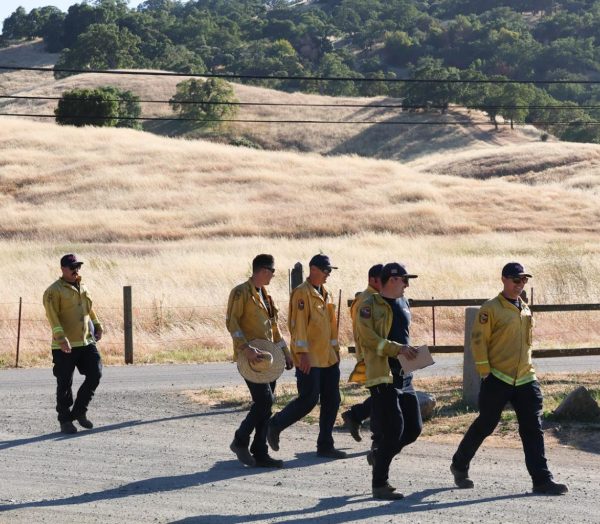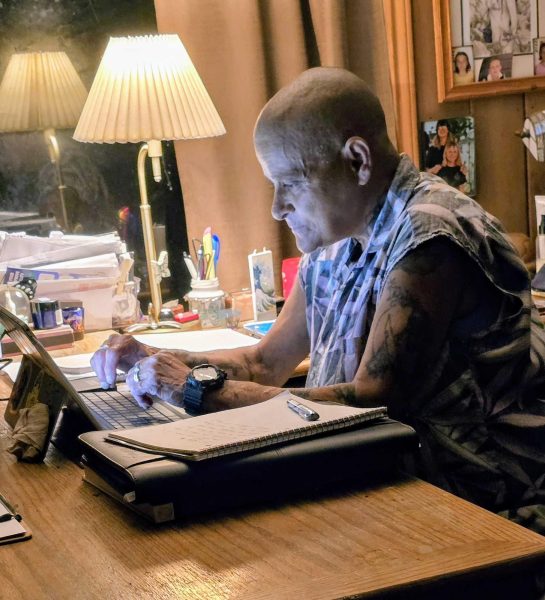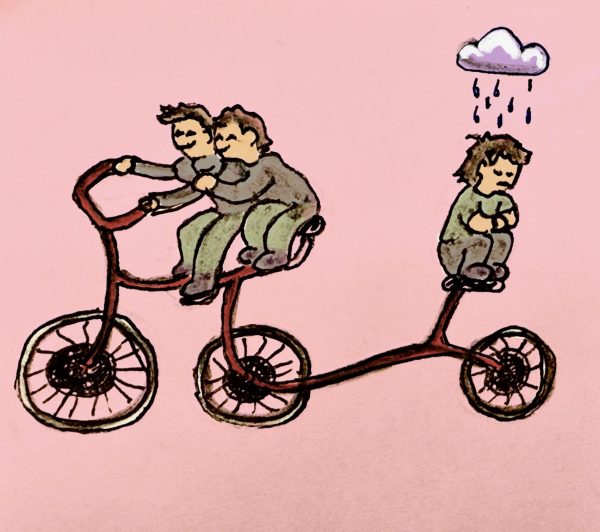Marilyn Monroe’s legacy in ‘Blonde’

Ana de Armas as Marilyn Monroe poses in front of a mirror in a scene in “Blonde.” (Snapshot: Netflix/Youtube)
November 5, 2022
“Blonde,” starring Ana de Armas as Marilyn Monroe, released to audiences worldwide on Netflix, Sept. 22. With a nearly three hour runtime, the film captivates and intrigues with its portrayal of Marilyn Monroe.
The movie acts as a visual representation of the book “Blonde,” written by Joyce Carol Oates in 1991. In the novel, Carol took people and fragments of memories from Marilyn Monroe’s life to create a version of it that is not true to her actual life. Many viewers of the movie, though, watched in hopes for an accurate biographical film and not a mostly fictionalized story of the famous Monroe.
Although it does not portray Monroe’s life accurately, it engrossed viewers with portrayals of captivating scenes that surround her personal life behind the lights with it black and white cinematography from time to time.
The soundtrack is truly sensual and deep, adding more flare to the film overall. The soundtrack is a fantastic facet of the film that further immerses the viewer in its intentionality.
The movie encompassed her journey to stardom at an adolescent age to her literal deathbed in Los Angeles, CA. The films songs choices, such as “Everybody Needs a Da-Da-Daddy” and “Diamonds are a Girl’s Best Friend” only further pushes the idea that she was nothing more than an empty shell who did not fit in the mold because of her own inability to become happy within her successes.
The film does an excellent job with its focus on heavy subjects, such as the hypersexualization of women in film. For example, Monroe’s experience as one of the biggest female actors during her time was mainly centered around how she physically looked in films instead of truly focusing on her ability to act in various types of films and any awards that she had won in her career.
In the scene where she is depicted to be intimate with Charlie Chaplin Jr. (Xavier Samuel) and Edward G. Robinson Jr. (Evan Williams), two classmates of hers, the camera mainly focuses on her sex appeal instead of on her trials and efforts of rising to fame.
Another example would include John F. Kennedy’s assault on Monroe and how it focused on her sexual life, which took away from her personal growth in her acting career.
Although this film is a fair representation of how a handful of women in Hollywood are often hypersexualized for their looks and physique instead of the movie focusing on their skills in acting or entertaining, overall, it is not truly a biographical film on Monroe’s life.
For example, “Blonde” alternates between a fictionalized portrayal of Monroe from the novel and truthful depictions of Monroe’s life, such as when it includes fictional relationships Monroe had alongside her real marriages that unfortunately failed. While some of these depictions are false, the inclusion of the fictional scenarios from the novel only further emphasizes how dramatic her life was behind the scenes.
The most interesting attribute of this film had to be how well Armas interchanged between both identities — that of Norma Jeane Mortenson and Marilyn Monroe. The portrayal of Monroe’s rise to celebrity status was jarring, and showed the haunting snapshots into how dark and lonely Monroe’s life really was behind the glitz, glamor, lights and camera in-order to become one of Hollywood’s most beloved celebrities to this day.
With a focus on relatability, such as an absent father figure, addiction and sexism, makes it hard to truly dislike the movie on every basis despite its inaccurate storytelling.
Though it did not fully answer many questions about Marilyn Monroe’s true life and identity, it did, however, successfully take into account how real Monroe’s personal struggles were and others who were a part of her life. “Blonde” makes the viewer ponder about their own lives after the lights and cameras are all shut off — making it a worthy watch despite its inaccuracy.
Rating: 3 out of 5 stars
























